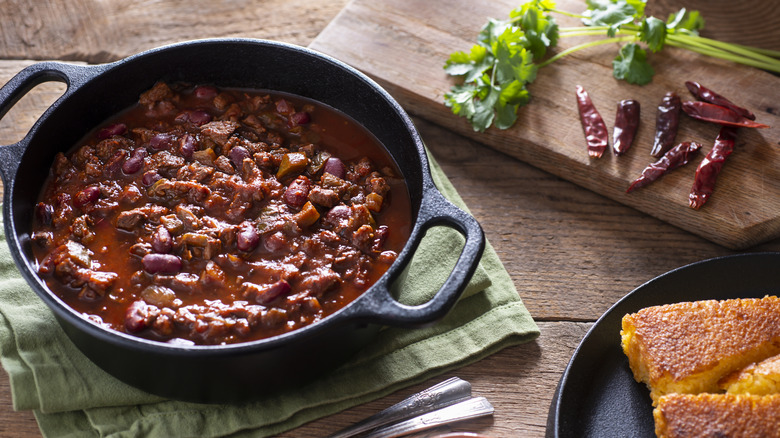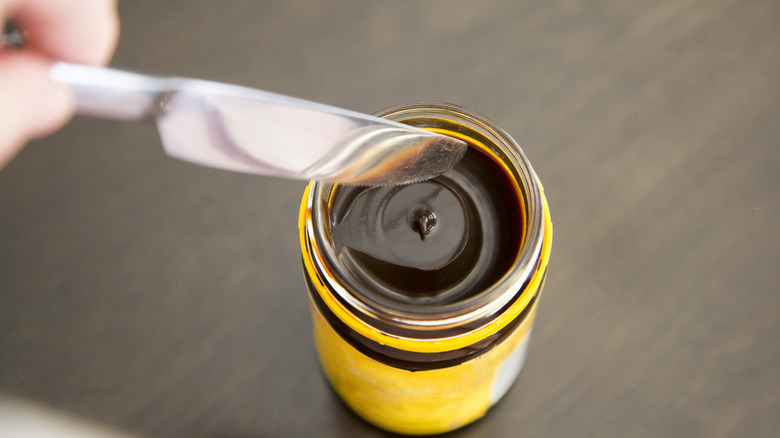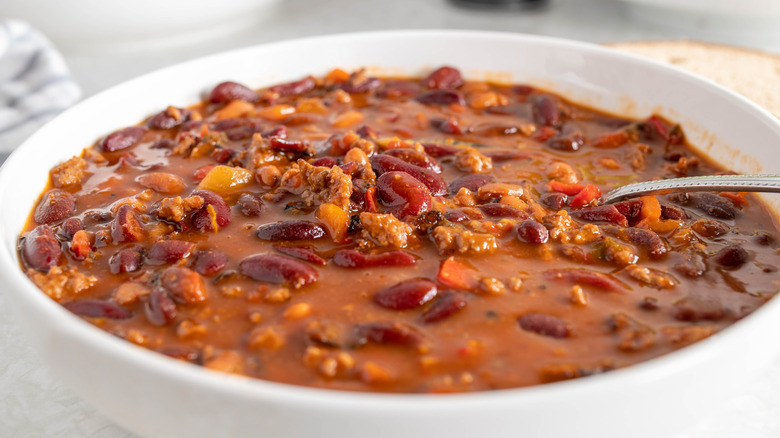Marmite Is The Flavor-Packed Ingredient You Need For Better Chili
Even a basic chili made with tomato sauce, chili powder, ground beef, and beans can be tasty. But there are plenty of other ingredients you can add to make the dish more flavorful. Hoosier chili, for example, also calls for elbow macaroni and brown sugar, while Cincinnati chili instead contains cocoa powder and warm spices like cinnamon and cumin. Though many different regional varieties of chili call for all kinds of ingredients and seasonings, adding Marmite is still largely unheard of.
If you've had the British condiment before, chili is probably the last dish you'd think to pair it with because it's traditionally used as a spread. Marmite's most common application is on toast with a bit of butter, though sometimes it's put on crackers or used in sandwiches. Despite being an uncommon choice, when you add it to chili, it introduces a savory flavor that enhances the overall taste of the dish.
How Marmite makes chili taste better
Marmite, on its own, is very salty. But while salt does generally make food taste better, it isn't just the saltiness that's responsible for Marmite's flavor-enhancing effects on chili. More than just a blend of salt and spices, Marmite is a byproduct of the beer brewing process called yeast extract. This yeast extract, consisting of a combination of oats, wheat, barley, and rye, is high in glutamic acid, which means it's essentially concentrated umami.
When you eat something that's rich in glutamates or glutamic acid, it activates certain taste buds that allow you to experience a fifth taste, better known as umami. Many chili recipes already contain umami-filled ingredients such as tomatoes, meat, and cheese, but the yeast extract in the Marmite takes it to the next level. So, when you add it to chili, you'll end up with a much more satisfying and balanced flavor.
How much Marmite should you add to chili?
Given that its high umami levels make it a natural flavor enhancer, you'd think that the more Marmite you add to chili, the better it will taste. However, that's not necessarily the case. In addition to being high in glutamic acid, Marmite is also high in salt and therefore it can easily make your chili salty.
For best results, try just a teaspoon of Marmite per can of crushed tomatoes. However, if you're not sure how to adapt this ratio to your own recipe, or you don't usually measure your chili ingredients, try treating it like a stock cube, per Nigella Lawson's suggestion. Because Marmite is so concentrated, a little goes a long way when it comes to chili. When in doubt, you can always taste as you go, just as you might with salt and pepper. You should really only taste the effects of the Marmite, not necessarily the Marmite itself.


